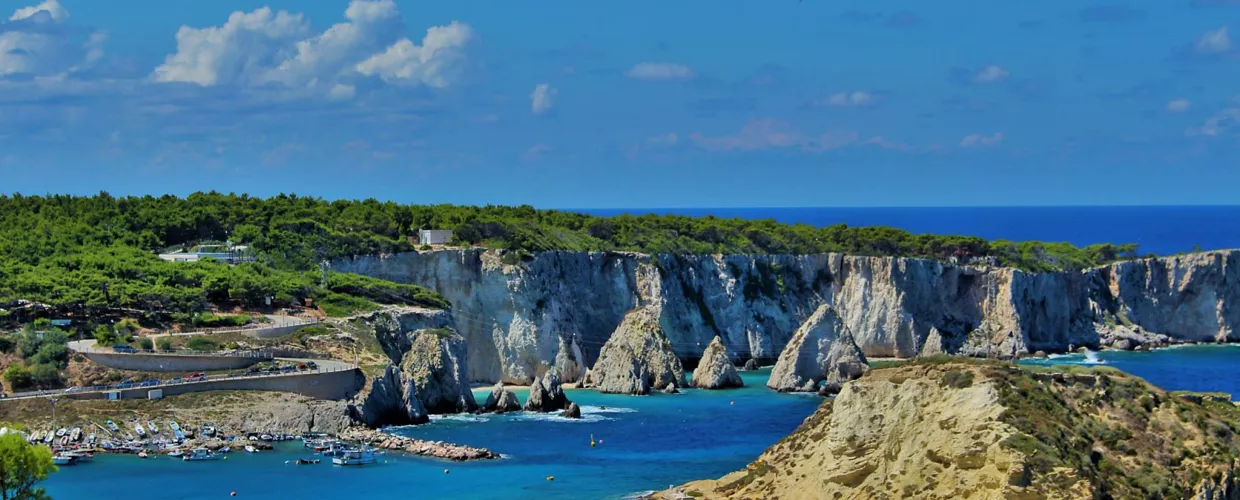This content was automatically translated. View the original text.


Overview
There are many ways to experience the beauty of the Gargano National Park, which encapsulates the very essence of nature and its relationship with humans. There is something almost sacred about this place, which you will sense as you walk through the forests, surrounded by tall trees and breathing in the sea air. This is a place for every season and every preference. Here you can visit historic villages, rural abbeys and churches, explore the rocks and hills, admire the landscape and fabulous sunsets, or dive into the cobalt blue waters of the coastal caves. The park is accessible to pedestrians, horses, bicycles, motorbikes and off-road vehicles. There are several visitor centres, at Monte Sant'Arcangelo, San Marco in Lamis, San Nicandro Garganico, Manfredonia and Lesina, and one of them should be your first port of call if you want more information about the natural environment, hiking trails, mountain bike rentals or details of guided tours.
The Park was established in 1995, in an area of 121,000 hectares covering much of the coastline, the top of the headland and the Umbra Forest, as well as the Maritime Reserve of the Tremiti Islands archipelago. The craggy coast is distinctive with its white limestone rock and the forests are populated by beech, yew and holm oak, some of them reaching monumental heights and proportions. The undergrowth is inhabited by foxes, wild boar, wolves and roe deer. The inland area is a nesting site for many birds of prey, while 80 varieties of orchid add splashes of colour to the brown earth.